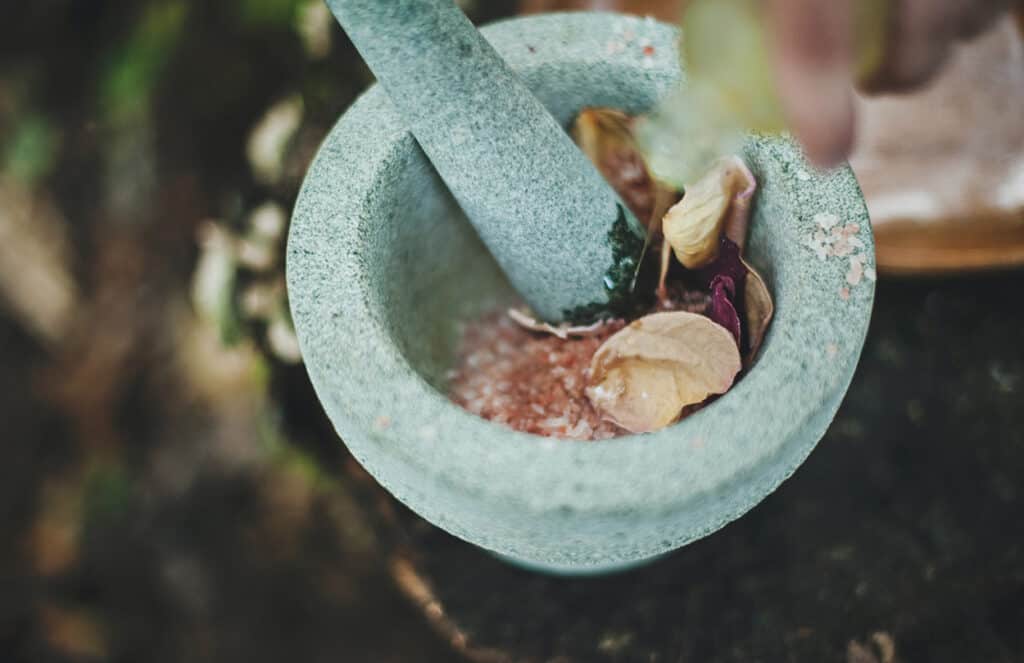Ever look at a mortar and pestle set and wonder, which is the mortar and which is the pestle? Well, the mortar is the bowl portion where you put ingredients while the pestle is the club-shaped tool used to crush and grind. These two simple tools, which have been around almost since the beginning of humankind, come together to form the mortar and pestle to crush down herbs or make some tasty guacamole.
Let’s dive a little deeper into what the mortar and pestle actually mean.
Why Is It Called the Mortar and Pestle?
In English, it’s thought that mortar comes from the Latin root word, “mortarium” which roughly translates into “receptacle for pounding”. While pestle translates from the Latin root word “pistillum” which quite literally means “pounder” or “tool which pounds and grinds”.
Is It Called a Mortar and Pestle Everywhere?
No, it’s not called a mortar and pestle everywhere. The English translation quite literally means “a receptacle for pounding used with a tool which pounds and grinds”. Some languages continue the theme, such as the French language which calls it “le mortier et le pilon”.
Whereas in Mexico, they refer to it as a Molcajete, which roughly translates into “seasoning bowl”. Japan refers to their mortar and pestle as Suribachi, which loosely translates into “grinding bowl”.
Are a Mortar and Pestle Always Made of Stone?
No, despite the name of mortar, not all mortar and pestles are made of stone. In fact, it’s likely the first mortar and pestles were made of wood, which is still a common material to this day. Mortar and pestles now include materials such as:
- Wood
- Stone
- Granite
- Marble
- Cast Iron
- Steel
- Porcelain
- Ceramic
Do the Mortar and Pestle Need to be the Same Material?
It’s common for the mortar and pestle to be made of the same material, but not a requirement. In fact, you’re more likely to have a harder time finding a mortar and pestle set without the same material than you are to find one with.
That’s not to say that they aren’t out there or that it goes against anything superstition-wise. The main reason you don’t want to really mix the material of the mortar and pestle is to avoid damaging either tool.
For example, using a wooden pestle on a granite mortar may end up causing the pestle to grind itself down because the granite material is too rough on the wooden pestle. And a granite pestle may end up damaging a porcelain mortar and even completely break it.
Are There Different Styles of Mortar and Pestles?
For the most part, there’s no real difference in style for mortar and pestles. While the Molcajete may have a different look, as it features a wider mouth and stands on a three-legged base, it’s still the same mechanism of use.
Do You Need a Specific Mortar and Pestle for Spells and Rituals?
Nope! You don’t need a specific mortar and pestle material for spells and rituals. It’s best to pick a material you both connect with as well as something you know you can take care of. Though you should buy a specific mortar and pestle which you only use for spells and rituals.
The main reason you’ll need a specific one is to avoid cross-contamination of ingredients that could ruin not only your spells and rituals but possibly the guacamole you’re looking to make. It’s best practice to have a kitchen or everyday use mortar and pestle and a specific witchcraft one.
FAQs
Which stone is best for a mortar and pestle?
A sturdy, solid stone such as granite or marble is the best option for a stone mortar and pestle. Another good option would include cast iron.
Should you wash a mortar and pestle?
Yes, you should wash a mortar and pestle under water immediately after use. Avoid as much dish soap as possible, as this dish soap may eliminate coatings on certain mortar and pestle materials.

